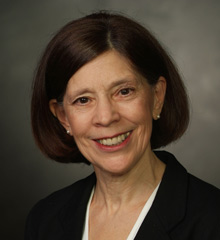Revised by F. Scott Spencer, 4/23
We do not know what sources went into the writing of this book, nor where, when, or exactly by whom it was written. The writer of Luke’s Gospel also wrote Acts, and so both books are often referred to as Luke-Acts, reflecting their relationship as a two-volume work. The common authorship of the two books suggests that Acts was written after LukeThe "beloved physician" and companion of Paul. More, probably between 75 and 95 CE, during a period of increasing pressure for followers of Christ to define themselves in relation to their Jewish roots. Acts looks back, seeking to lay out how Jesus’ small group of first followers in Jerusalem spreads throughout the eastern Mediterranean world and becomes a largely GentileA gentile is anyone who is not Jewish. The term, which is derived from words that the Bible uses to denote the “nations” of the world, reflects beliefs that God had designated Israel as a nation that would be distinct from others, and a blessing… More community.
The story of Acts extends from the 40 days between the resurrection of JesusJesus is the Messiah whose life, death, and resurrection are God’s saving act for humanity. More and his ascension to the end of Paul’s two years in Rome, a relatively short period of around 30 years. Historical benchmarks alluded to in Acts include the edict of Emperor Claudius expelling Jews from the city of Rome (49‒54 CE; 18:2) and the proconsulate of Gallio in Achaia, confirmed by an inscription at Delphi (51‒52 CE; 18:12).
In terms of geography and culture, Acts locates readers in the eastern Mediterranean world of the early Roman EmpireThe region we today call Palestine and Israel was under Roman rule during the time of Jesus and the early church. The Roman Empire was in its ascendancy during the first century, making it the most powerful political and military force on earth. More. Christ-proclaiming missionaries visit major cities, such as Ephesus, Damascus, Antioch, Corinth, Philippi, and Rome. Acts reliably tracks travel routes between cities by land and sea as well as aspects of urban governance and forms of labor.
History-writers of the Greco-Roman era commonly created speeches that could or should have been made by influential figures. Like other accounts of ancient history, Acts is selective. For instance, it provides scant information about the spread of the gospel into Egypt and other north African areas in the first century. Although a variety of secondary ministers and minor figures fill the narrative of Acts, its first half heavily focuses on the apostleDerived from a Greek word meaning “one who is sent,” an apostle is a person who embraces and advocates another person’s idea or beliefs. At the beginning of his ministry Jesus called twelve apostles to follow and serve him. Paul became an apostle of Jesus… More PeterPeter (also known as Cephas, Simon Peter) was the disciple who denied Jesus during his trial but later became a leader in proclaiming Jesus. More and the second half on the missionary PaulThe Apostle Paul, originally known as Saul of Tarsus, was the author of several New Testament letters and the founder of many Christian communities. More. While this selectivity can be frustrating for those who would like to know more and misleading for those who insist that Acts tells the definitive history of the earliest Christ-movement, the Book of Acts remains an invaluable account of the expanding Christ-centered mission from Jerusalem to Rome.

